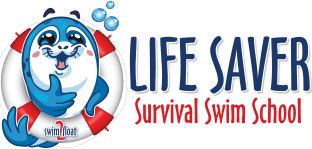
Many thousands of babies that are younger than one have been taught how to float. Babies are normally taught how to float as their first step in learning how to swim. I know that I never learned how to float that early in life, but I’m tickled when new Mother’s bring their infants into our school and tell us, “Here, I want to watch my baby float!” I’m honored that they trust my school that much.
Teaching Infants to Float is Natural
Remember, we all floated in our mother’s liquid before we were born. You would think that getting infants back into a liquid (water) is just natural. But, it is NOT! If you can get infants back into water so that they are comfortable, it helps them to be less stressful of water as they grow older.
Every day about 14 people die from drowning… two are children under the age of 14. It is the leading cause of death for children under the age of four. Teaching infants to float has saved thousands of lives.
Infants as young as 6 months old can be taught to float. At this age, they are still too young to swim because they are not developmentally ready to move through the water. However, they are taught to hold their breaths and to assume a natural position for floating. After a few lessons, the child can be flipped over in the water and the infant is able to right themselves into a floating position.
I know it is kind of amazing. How can a child that can’t walk or talk, learn how to float? Surprisingly, at this stage they are learning to survive… they will surprise you! Watch this 13-second video:
Fully Clothed – Shoes & All
The infant is taught to float with their shoes and clothes on. The reason for this is that in most drowning situations, the child will have their clothes on.
As the infant approaches one year old, the child will be taught to “swim” underwater, look for the steps going out of the pool, and to turn over and float when they need air. Their actual swimming lessons will begin.
Lessons for infants last about 10 minutes. This reduces the health risks for infants and that’s about as long as their attention span is at this age.
Please note that the American Academy of Pediatrics states that swim lessons for children that are at least 1 year of age can be effective for preventing drowning, but they don’t support training for children any younger than that.
What they are really worried about is that classes like these could give parents a false sense of security. Be aware, even if your child takes and passes classes like these, you as a parent still need to give 100% of your attention to your child if they are in or near the pool.
Life Saver Survival Swim School Teaches Everyone to Swim
Life Saver Survival Swim School is anxious to teach your child so that you can watch your baby float. If your child should suddenly find themselves in an unfamiliar, aquatic situation… our goal is to teach them to survive.
If you have any questions, please call the owner of Life Saver Survival Swim School and ask those questions. The owner’s name is Bonnie and she can be reached by dialing (832) 366-3008. Or, you can email her.


